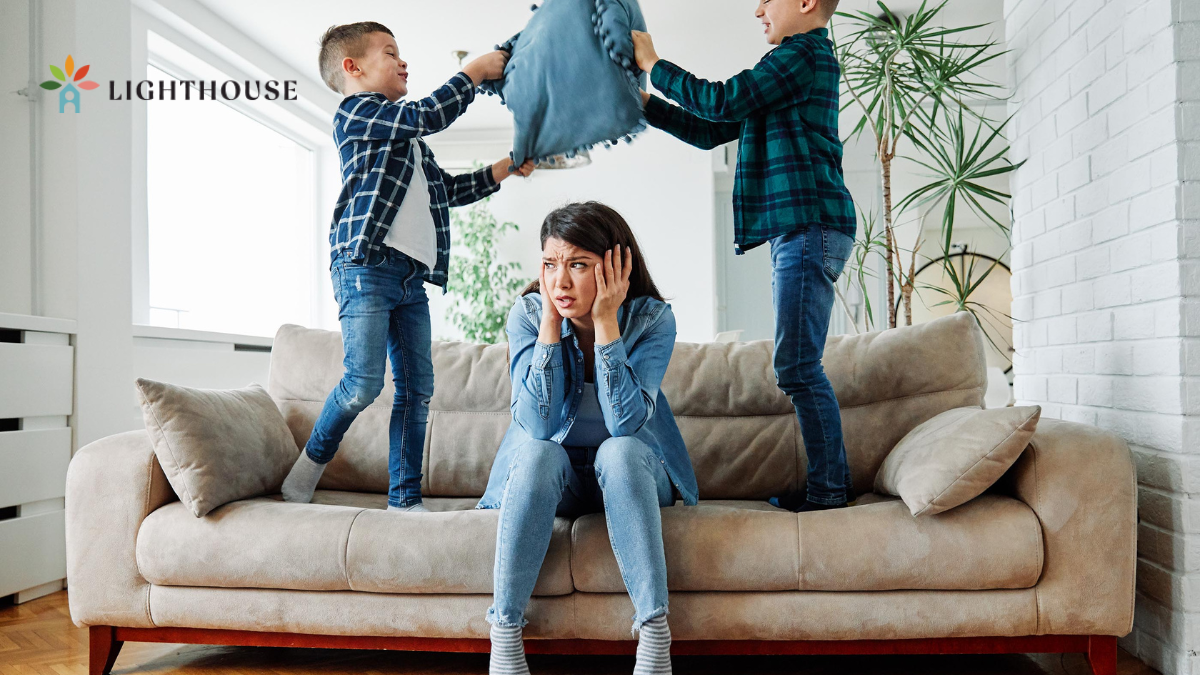Key Points:
- Understand why hyperactive behavior shows up in the home and how to respond effectively.
- Create a structured and engaging environment with clear expectations and supports.
- Use practical, consistent strategies rooted in behavioral science, but explained in parent-friendly terms.
A hyperactive child doesn’t stop just because you’re home. In fact, home is often where their energy levels seem to go from 10 to 100—running, jumping, talking nonstop, or darting from one room to the next. For many parents, learning how to deal with a hyperactive child at home becomes a daily challenge. But understanding what’s behind the behavior—and how to support your child in healthy, meaningful ways—can make all the difference.
Hyperactivity isn’t just about “too much energy.” It can stem from a variety of causes: unmet sensory needs, limited communication skills, anxiety, impulsivity, or even a lack of structure. If your child has been diagnosed with ADHD or autism, you may see hyperactive behaviors pop up even more often. Regardless of the cause, here’s how to deal with a hyperactive child at home in ways that are practical, compassionate, and effective.
 Start with Why: Understanding the Function Behind the Behavior
Start with Why: Understanding the Function Behind the Behavior
Before jumping to solutions, take a moment to ask yourself what your child’s behavior is trying to accomplish. In Applied Behavior Analysis (ABA), we look at the “function” of behavior—what purpose it serves for the child. This helps us respond in ways that actually work, instead of just reacting out of frustration.
Hyperactive behavior might serve to:
- Get attention (positive or negative)
- Escape or avoid a task they don’t like
- Access something they want—like a toy, screen time, or food
- Self-soothe through movement or sensory input (this is called automatic reinforcement)
Once you start spotting patterns, you can begin matching your response to the actual need behind the behavior. If they’re bouncing around the living room because they want your attention, ignoring it or redirecting them to a quiet task might be more helpful than yelling.
Create a Home Environment That Supports Regulation
Kids who struggle with hyperactivity often thrive in environments that offer structure, predictability, and opportunities for movement. A chaotic or unpredictable home can make things worse. But that doesn’t mean your house needs to feel like a boot camp—it just needs to be clear and consistent.
Here are a few helpful starting points:
- Use visual schedules: Show your child what to expect throughout the day using pictures or icons. This can reduce anxiety and impulsivity by giving them a clear roadmap.
- Design calming spaces: Create a small nook or cozy corner with soft lighting, pillows, or noise-canceling headphones where your child can go when they need a sensory break.
- Keep routines consistent: Wake-up times, meals, screen time, and bedtime routines should follow a predictable rhythm. The more consistent your home feels, the more secure and in control your child will feel.
- Use movement as part of the day—not a reward: Build in frequent chances for your child to move around before they’re climbing the walls. Think trampoline breaks, obstacle courses, or five minutes of jumping jacks between tasks.
7 Practical Strategies That Actually Help at Home
Once your environment is more structured, the next step is adjusting your interactions. These seven strategies can help you deal with hyperactivity more effectively in day-to-day life.
1. Break Big Tasks into Small Steps
Hyperactive kids can easily feel overwhelmed by big demands. Instead of “Clean your room,” say:
- “Pick up your books.”
- Then, “Now put your toys in the basket.”
- Then, “Bring your laundry to the hamper.”
Smaller tasks feel more manageable and reduce the likelihood of avoidance behaviors like running away or getting distracted.
2. Use First/Then Language
This simple strategy helps kids see the reward at the end of a task. For example:
- “First homework, then play outside.”
- “First we brush teeth, then we read a story.”
It sets a clear expectation and helps with follow-through, especially when attention is short.
3. Reinforce Positive Behaviors Immediately
Hyperactive children respond well to specific, frequent praise. Instead of just saying “Good job,” try:
- “I love how you sat still during breakfast!”
- “You waited your turn—high five!”
Make sure the praise is immediate, so they can connect it to the behavior.
4. Set Clear Boundaries—and Stick to Them
Kids need to know what’s okay and what isn’t. Be consistent with limits, and follow through with natural consequences. For example:
- “If you throw the toy, it goes away for 10 minutes.”
- “If you yell, we’ll take a break before continuing.”
Don’t threaten punishments you can’t enforce, and avoid long lectures—they often don’t work with impulsive kids.
5. Redirect Instead of Reprimand
When your child is revving up, gently redirect them rather than scolding.
- “Let’s use our jumping feet on the trampoline.”
- “Looks like your body wants to move! Should we do some animal walks?”
This validates their need for movement while guiding them to do it safely.
 6. Offer Choices to Build Cooperation
6. Offer Choices to Build Cooperation
Giving your child some control can prevent power struggles. Instead of barking orders, offer two acceptable choices:
- “Do you want to brush teeth first or get your pajamas on?”
- “Pick one: dance party or scooter ride?”
This works especially well with children who crave independence and tend to resist demands.
7. Model and Teach Self-Regulation
Your child learns a lot by watching you. Use calm breathing, label your emotions, and narrate your own regulation strategies. You can also teach simple regulation tools like:
- Belly breathing
- Squeezing a stress ball
- Drawing how you feel with colors
Teaching these skills takes time, but the payoff is huge in long-term emotional development.
Why Consistency and Connection Matter More Than Perfection
You don’t need to be perfect. What your hyperactive child needs most is a predictable environment, patient responses, and meaningful connection. There will be tough moments—days when you’re tired and your child’s behavior seems off the rails. That’s normal. But if you show up consistently, and respond with curiosity instead of punishment, your child is more likely to grow, learn, and regulate over time.
Here’s something to consider: hyperactivity isn’t just “bad behavior.” It’s communication. It’s your child’s way of saying, “I need something,” even if they don’t have the words. If you can start from there—“What are they trying to tell me?”—you’ll be one step closer to a calmer, more connected home.
When to Get Extra Help: ABA Therapy Can Support Lasting Change
If your child’s hyperactivity is interfering with daily life—even with strategies in place—it may be time to consider additional support. That’s where ABA therapy comes in.
Applied Behavior Analysis (ABA) isn’t about forcing your child to sit still. It’s about uncovering why they behave the way they do and teaching them new, meaningful skills that reduce frustration—for both them and you.
At Lighthouse ABA, we specialize in working with children who experience challenges with hyperactivity, impulsivity, and attention. Our team builds personalized plans that are designed around your child’s strengths, your family’s goals, and real-life situations at home. Whether your child is constantly on the move, struggles with transitions, or has trouble following routines, we’re here to help.
We offer ABA therapy services in New York City and North Carolina, providing in-home and center-based programs that create structure, build regulation, and promote independence.
Looking for support in navigating hyperactivity at home? Get in touch today to learn how our tailored services can help your child thrive—starting at home.


